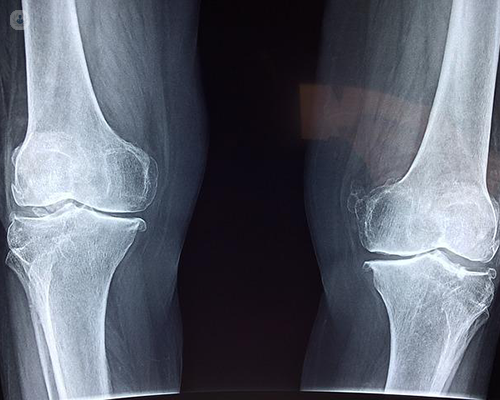What are the advantages of robotic knee replacement surgery?
Escrito por:Over the last two decades, orthopaedic surgery has been revolutionised by advances in technology, vastly improving patient safety and outcomes. Robotic and computer-assisted procedures, such as knee replacement, are now widely practiced and very well established. In this illuminating article, renowned consultant orthopaedic surgeon Mr Ahmad Ali offers expert insight on the benefits of robotic assisted knee replacement surgery and explains how the future of orthopaedic surgery will be shaped by cutting-edge technology.

What are the most common orthopaedic surgical procedures which now involve robotics?
Computer-assisted surgery (CAS) has been developed and implemented into practice over the past twenty years. Knee replacement is the most common surgical procedure which can benefit from the use of the robotics to provide more precise and accurate alignment, therefore improving the patient’s outcome.
Robotic and computer-assisted surgery has many applications in knee replacement, including:
- navigation knee replacement
- personalised instruments for knee replacement
- personalised implants for knee replacement
- robot assisted knee replacement
Is robotic surgery safer or more accurate than open procedures?
Robotic surgery is more accurate than traditional surgeries due to the level of precision it offers which is beyond the natural ability of human eye. This allows for a better alignment of the leg and a better balance in the soft tissue around the knee.
Robotic-assisted surgery uses minimally-invasive incisions making the procedure safer as there is less tissue damage. This also results in less scarring, a lower risk of infection, shorter hospital stays and faster recovery. Overall, compared with traditional knee replacement surgery, robotic techniques have been shown to deliver better results, less trauma on the bone and surrounding tissue and improved outcomes for patients.
Are there any risks to robotic surgery?
Any surgery has risks but the robotic surgery has less risks than the traditional surgeries as it adopts the most minimally-invasive principles.
Does robotic surgery take longer than traditional surgery?
Robotic surgery requires a minimal increase in the operating time in order to adjust the computer sensors and probes. The benefits of this, however, far outweigh the disadvantages.
How is recovery impacted by the use of robotics in surgery?
The robotic surgery allows the patient to recover more quickly and get back to usual activities by restoring the pre-operative function faster than traditional surgeries. Minimally-invasive procedures mean there is less tissue damage than in traditional, open surgery, lowering the risk of infection and allowing for faster recovery.
What does the future of robotic surgery in orthopaedics look like?
The technology used in orthopaedic surgery is expected to continue to evolve in to cover more aspects of practice so that more patients can benefit from it. The robotic knee replacement is expected to become standard practice and the default for any future arthroplasty due to the advantages it offers.
Mr Ali is one of the UK’s leading consultant orthopaedic surgeons who specialises in knee replacement surgery. If you are considering knee replacement surgery and wish to discuss your options, don’t hesitate to visit Mr Ali’s Top Doctors profile where you can book a consultation.


